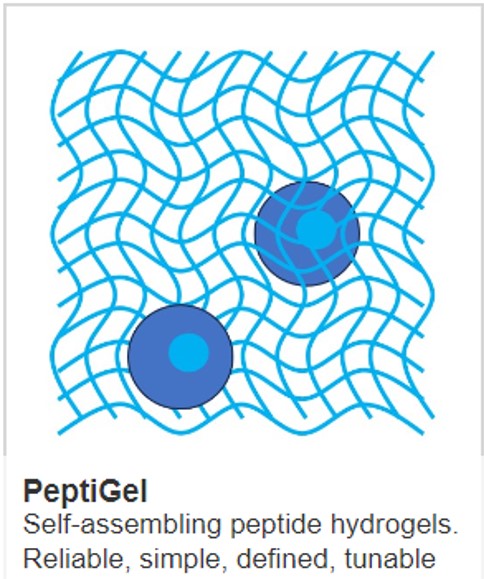Hydrogels and Drug Delivery Systems

Although there are some challenges associated with using hydrogels for drug delivery systems, there has been considerable progress in recent years.
What are hydrogels?
Hydrogels are three-dimensional (3D) networks of hydrophilic polymers that swell in water and can hold a large amount of water while maintaining their structure due to chemical or physical cross-linking of individual polymer chains.
Hydrogels have their uses in clinical practice and experimental medicine, such as:
- cellular immobilisation
- diagnostics
- regenerative medicine
- tissue engineering
The unique physical properties of hydrogels have made them so valuable in drug delivery. They are easy to tune as their structure is so porous, and this porosity also permits drugs to be loaded into the gel matrix and then released at the rate you desire.
How are PeptiGels used?
PeptiGels are ready-to-use fully synthetic peptide hydrogels that are biologically relevant and formulated to meet your cells’ needs. PeptiGels’ charge can be tuned so that they can give a slow or fast release depending on the charge of the drug you are delivering.
PeptiGels® are shear-thinning materials and consequently can be injected or sprayed into specific sites in vivo, making them ideal delivery vehicles for the controlled delivery of therapeutics. The kinetics of release of the therapeutic is manipulated in part by varying the pore size of the hydrogel (via peptide concentration) but mainly via directing electrostatic interactions.
In one exemplar study, PeptiGels® have been used for the targeted delivery of therapeutic mRNA loaded within lipid nanoparticles (LNPs) to treat colorectal cancer, the third and fourth most commonly diagnosed type of cancer in males and females, respectively, with high rates of mortality.
Several biological delivery vectors, including liposomes and LNPs, have been used to deliver mRNA, but with some notable limitations. Direct intratumoral injections of such formulations, for example, have shown poor tumour retention, which has limited the effectiveness of these products. PeptiGels demonstrate the potential to overcome these issues by immobilising the nanoparticles at the injection site. Furthermore, these hydrogels are highly compatible with this approach and are known to be non-immunogenic and non-inflammatory and can be tailored to match the properties of the surrounding tissue/tumour, which further benefits retention in the tumour.
Benefits of using hydrogels in drug discovery
Using hydrogels for drug delivery offers largely pharmacokinetic benefits as hydrogels help maintain a high local drug concentration in the surrounding tissues over an extended period. However, they can also be used for systemic delivery.
Hydrogels are also highly biocompatible, as reflected in the success of their use in vivo. The biocompatibility of hydrogels is mainly down to their high water content and the physicochemical similarity of hydrogels to the native extracellular matrix, both compositionally (particularly in the case of carbohydrate-based hydrogels) and mechanically.
To learn more about PeptiGels and how they can help with your drug delivery system research, please contact our expert team.
IMAGE: Manchester Biogel.
Learn more about powerful technologies that are enabling research:



